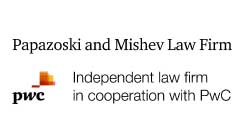Global economic movements have led the real estate and construction sectors across CEE to face several issues: supply chain problems, rising construction material prices, and labor shortages, to name but a few, have made it difficult for real estate and construction projects to be completed with the same efficiency as before. Bojovic Draskovic Popovic & Partners Partner Marija Bojovic, SOG Law Firm Partner Milos Gledovic, and Andrejic & Partners Partner Aleksandar Andrejic look at the extent to which these issues are reflected in the Serbian real estate market.
Non-Issues?
“Shortages in the supply of labor force and supply chain interruptions related to construction materials have been constant in the past several years and are still ongoing,” Gledovic begins. “This resulted in hikes in prices and the import of labor force, a new phenomenon for Serbia, which has traditionally exported labor to western countries.” Yet, he stresses that these issues made no “significant impact on the level of work, and the construction companies are still managing to deliver.”
Resonating Gledovic, Andrejic adds that “the real estate market recorded a jump in the prices of almost all immovable properties. The reason for this growth and development of the real estate market is the imbalance between supply and demand, as well as the extremely favorable housing loans which were available until recently,” he explains. However, Andrejic does add that there has been a drop of about 9 to 10% in the number of issued construction permits. “This is attributed to investor caution, having in mind the global situation,” he notes.
Agreeing with this sentiment, Bojovic says that “geopolitical events have ramifications for all market trends in general and especially for the construction and energy sectors.” Consequently, she says “the construction sector in the Republic of Serbia, after years of stable growth, has started to record a slight decline in the last quarter.”
Still, even with a slight dent, the real estate market in Serbia seems to be performing admirably – at least for now. “The report of the Republic Geodetic Institute states that, in the first six months of 2022, the real estate market reached as much as EUR 3.6 billion,” Andrejic reports. This is a “quarter more than last year. The biggest part of that growth is due to a rise in real estate prices. Considering the increase in the price of construction materials and the interest rates for housing loans, it is expected that the market will slow down and, due to higher interest rates on housing loans, the prices would drop in the following period,” he explains.
Signs of this (possible) decline are already showing, according to Bojovic, who shares that there was a decline of 7.6% in the gross added value in the construction sector. “This was an alarm for all the stakeholders to be proactive and agree on a package of necessary measures to be adopted by the government, which would serve as a stimulus to avoid this sector’s further growth to be threatened,” she explains.
However, even with such a drop, Bojovic reports that “there weren’t substantial operational interruptions, given that there is still a growing demand on the market for commercial, residential, and warehousing facilities, as well as facilities and infrastructure required to produce electricity from renewable energy sources.” Bojovic believes this to be sufficient motive for companies to maintain “increased activity in the construction and energy sectors and, at the same time, maintain the relative ease of their procuring additional financing either through loans or equity.”
Chiming in on the sustainability of growth in the sector, Gledovic adds that, with “real estate prices having gone up tremendously in the past couple of years,” developers were able to “absorb the increase in construction costs” and maintain activity levels.
Comparing Notes
Contrasting Serbia to the rest of CEE, there seem to be several factors in favor of the Balkan country. “Serbia is not part of the EU, and most foreign investors in Serbia come from non-EU countries, such as Israel, the UAE, and China,” Gledovic says. “The price hike is also boosted by the high influx of immigrants from Russia, as Serbia remained open for them,” he explains.
As another peculiarity of Serbia, Gledovic points to the “government’s significant influence on property rights, which is the inheritance of the socialist era and the consequence of a not-ideal transitional legal framework.” He stresses that “many sites for development are burdened by legal issues which are challenging to resolve, which drives the prices of land up.”
Andrejic suggests the Serbian real estate sector might also be outperforming regional ones on account of major projects. “Capital projects such as the Belgrade Waterfront are something that makes the current market in Serbia special – such capital projects are not available in the region,” he says. “Also, logistics centers and other facilities for commerce are developing heavily to satisfy market demand. Finally, the construction of infrastructural projects such as roads or railways contributes to the overall impression that, everywhere in Serbia, something is being constructed,” he explains.
Moreover, Bojovic notes that, in addition to “substantial market demand for both commercial and residential spaces,” there is substantial “support from the policymakers to facilitate and increase investments,” which makes all the difference.
Building On
Ultimately, with such high market activity and investor interest, it would seem that the Serbian real estate and construction sectors will keep marching onward at a steady pace. However, our experts are a bit wary of making bold predictions for growth.
“The future depends on the global situation, the prices of materials, and overall inflation,” Andrejic stresses. “The Serbian market will follow global influences, and we can expect its rise or drop in alignment with those. It is reasonable to expect that prices of real estate would drop since they have been rising for years,” he explains. “At some point, considering the higher interest rates and the overall situation, it could be expected for prices to go lower.”
Agreeing with Andrejic, Gledovic continues by adding that he expects “the rise of interest rates and construction costs to slow down, if not entirely stop, new developments in all segments [that include] logistics.” He trusts that the “level of prices and yield will, to a great extent, depend on the political direction the new Serbian government will take concerning the Ukraine conflict and the consequences that could have, which are very difficult to predict.”
Finally, ending on a somewhat positive note, “given that the real estate sector is the most important one for the economic growth of Serbia,” Bojovic believes that further legislative reforms in this sector are incoming and that they “will enable a new cycle of investments in the industry.”
This article was originally published in Issue 9.10 of the CEE Legal Matters Magazine. If you would like to receive a hard copy of the magazine, you can subscribe here.






















